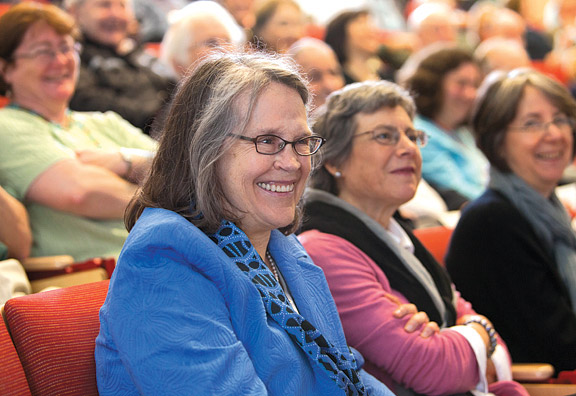It’s not often that a specialist in Gnostic gospels and early Christianity draws a standing-room-only crowd to a Commencement forum. But Karen L. King ’84 PhD did just that, and she kept her audience rapt, too, in a talk that was plainspoken, erudite, and even funny.

When the owner of the fragment first approached her in 2010, King said, “My first reaction was, ‘Really? Modern forgery—here we go again.’” She rolled her eyes. But the owner persisted, and a papyrologist concluded that the fragment might be authentic. They decided to announce their finding and “let academicians do what academicians do—debate!” she said.
Instead, the paper made international news: TV, blogs, People magazine. The reactions were “intense, hugely varied, and global,” King said, and they had little to do with her actual discovery. “All the people who love me, love me for something I didn’t say, and the people who hate me, hate me for something I didn’t say either.”
King showed an image of the fragment on the screen behind her. “It’s really little—smaller than a credit card,” she said, translating the tiny writing.
“The fragment is not evidence of Jesus’s marital status,” King said. She speculates that it is, however, a late second-century translation of a dialogue in which Jesus talks to his followers about family, discipleship, and worthiness—what it means to live the Christian life. He mentions Mary. “Does it refer to Mary, his mother?” she asked, citing the Gospel of Philip, which mentions the three Marys “who always walked with the Lord”: Mary, his mother; Mary, the sister; and his beloved Mary Magdalene.
By the end of the talk, the audience was buzzing—not with answers so much as questions: why were early Christians so concerned about Jesus’s marital status. And more interesting: why are we so invested in it today?





